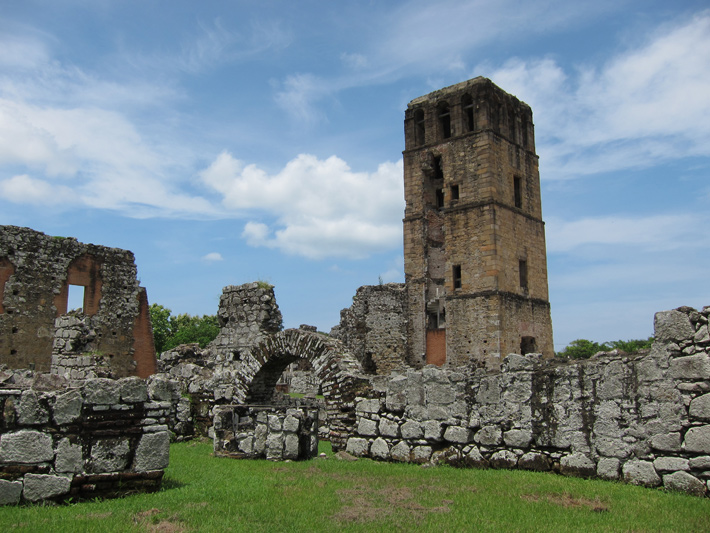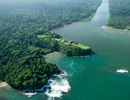City of Towers
March/April 2013

Modern Panama City has a love affair with height. Soaring condos line the city’s waterfront. The source of this modern obsession might be visible in the very oldest part of the city—the restored bell tower at Panama Viejo, the ruins left behind following Captain Henry Morgan’s sacking of the city in 1671. One of the few Panamanian archaeologists, Tomás Mendizábal, former director of Panama’s National Museum, used to dig at the site with Patronato Panamá Viejo, the preservation group responsible for its upkeep. Panama Viejo is “the only place in Panama you can actually do research and archaeology in a country where such things are unusual,” says Mendizábal.
Just under the Spanish settlement at Panama Viejo is evidence for 1,500 years of pre-Columbian occupation. Among the early finds are several complete urn burials, as well as a burial of a woman who was laid on a bed of skulls and surrounded by nine more skulls. The find predates the Spanish town by 300 years.
The existing structures, some of which have been restored, are meant to represent the Spanish town in its final moments. The Spanish wrote that Morgan and his men burned the town on their way out. Accounts speak of a tall column of smoke. But evidence of the city’s demise has been hard to come by, says Mendizábal, who is also Panamanian codirector of the Lost Ships of Henry Morgan Project. In the ruins of what would have been city hall, on a staircase landing, is a layer of ash and charred stone steps (and the remains of a sword) that can be dated to the sacking. Across the plaza, there are layers of roofing tiles where ceilings caved in, but they were not burned. There is no other evidence of fire anywhere else. “Not one bit of ash,” says Mendizábal. “There isn’t a smoking gun, unless the whole town is a smoking gun.” This apparent lack of evidence for the well-documented burning of the town presents a puzzle, and makes the search for other evidence of Morgan’s presence in Panama even more interesting.
Mendizábal also sees the search for the remains of Morgan’s raid through a local perspective. It wasn’t just a pirate attack, it was also the destruction of a city and the intimidation and torture of a populace. “If people knew what pirates did,” he says, “it wouldn’t be quite so romantic.”
|
Main Article:
|

Pirates of the Original Panama Canal
|